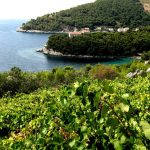April the 20th, 2023 – An interesting Neretva Valley archaeological discovery has seen the pause button pressed on a long awaited project worth half a billion kuna.
As Poslovni Dnevnik/Marija Brnic writes, for almost a decade in the very south of Dalmatia, more precisely in the Neretva Valley, residents been waiting for a systematic and long-term solution to the problem of salty sea water that penetrates upstream and slowly kills agricultural production, the main (and extremely important) economic activity of that region of the country.
A glimmer of hope appeared with the National Project of Irrigation and Agricultural Land Management, within which the Lower Neretva was selected as a pilot project.
EU funds
The value of the venture was estimated to stand at more than half a billion kuna, and its envisaged realisation spanned two phases, firstly the physical barriers to the penetration of salty water coming in from the sea, and then in the second phase, the construction of a distribution network system to arable agricultural areas. EU funds would drive the project forward.
However, during the preparations, a problem arose that suddenly stopped this undertaking, which is crucial for the preservation of production in the entire wider Neretva region. The site chosen for the construction of the barrier, more specifically between Komin and Opuzen, turned out to be a place hiding a very valuable archaeological site.
During the surveying of the terrain and the underwater part of the research which was carried out back in 2021 by Hrvatske vode (Croatian waters), under whose authority the project was prepared, it was determined that the remains of two wooden vessels were buried in the riverbed. In addition to them, ancient amphorae and fragments of Roman ceramics and processed wood were also found, and last year, they had five underwater archeological probes investigate within this narrow zone and fragments of processed wood were found that probably belong to the ship’s construction, while part of the amphora was laid in a row, indicating that this is the old ship’s cargo.
It was concluded that this Neretva Valley archaeological discovery was the remains of a shipwreck from the Roman period, all of which were found at the location intended for the construction of the bulkhead, where part of the cargo and possibly the ship’s structure were probably preserved. Based on data from Croatian waters, it is estimated that the vessel dates from the period from the end of the 1st century BC.
The valuable artefacts were partially or completely buried in sand and mud and were documented by sounding, and now, before starting any activities on the project of installing a dam and building an irrigation system, Croatian waters is hiring experts who will carry out underwater research and conservation/restoration works.
Conservators from Imotski
A contract has just been concluded with the Institute for Maritime Heritage Ars Nautica from the island of Pasman near Zadar, which won the rights to the job in a public tender at a price of 600,000 euros and for which it has four months from the start of the work.
The Conservation Department in Imotski will decide where the exhibits from this Neretva Valley archaeological discovery will end up showcased. After that, activities with the project to save production in the Neretva Valley will continue as they were until now. The project of setting up a mobile barrier and creating a pool of desalted water that would be transported to agricultural areas through a pressure distribution network system would enable salt to be washed from the surface layer of the soil and ensure quality water for the cultivation of agricultural crops.
The next step for Croatian waters will be to prepare everything so that it can finally start investing, which will require 73.5 million euros in total.
For more, check out our news section.










